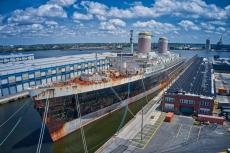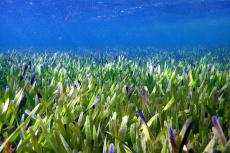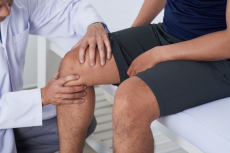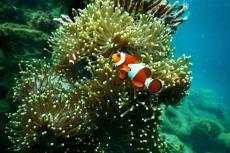Ever wonder why the number of weights you need to wear changes from dive to dive or why there is a significant difference in the air left in your cylinder on similar dives? Simon Pridmore investigates these mysteries and offers insights and advice on how to deal with them.
Contributed by
Friends Phil and Donna passed this tale on to me, and it is an excellent topic for a Scuba Confidential column. They were living in Florida at the time and heard that one of the local boats had a couple of spare slots. So, they threw their equipment into the truck, drove down to the dock and jumped on board.
Phil takes up the story…
The dive day
It was a beautiful morning. The sea was flat and calm, and the dive deck was a hive of activity, typical of the first day of a long holiday weekend, with visiting groups getting themselves back into a diving frame of mind after too many weeks spent out of the water. We watched while they busied about putting their gear together, choosing their weights and setting up their dive computers. They looked like a competent bunch, and we were looking forward to a nice, relaxing day on the ocean.
We were having a lovely time, but as the morning progressed, we overheard several remarks that, individually, might have seemed insignificant, but together, they set a train of thought rolling through our minds.
The problems
Here are a few examples of the sort of thing we were hearing.
“On dive one, I used the same amount of weight I usually wear, but I was way too heavy. So, I took a couple of pounds off. Then, on dive two, I couldn’t even get down, and the divemaster had to give me one of his weights. I was so embarrassed. It was like I’d forgotten how to dive.”
“For me, it was the opposite. I was too light on dive one, so I bobbed to the surface during my safety stop. I couldn’t stay down. Talk about embarrassing! Then, before dive two, I added another weight to my belt, and I was way too heavy all the way through the dive.”
“I had to adjust my cylinder band to put the BCD on my dive-two cylinder. It had fitted just fine on dive one. I must have done something to it when I took it off.”
“It’s strange. I must have been breathing harder than usual. My tank had 3000psi in it when I started, but after half an hour I was already low on air.”
“Really? I came up with way more air than usual on the last dive. And it wasn’t because I was relaxed. Quite the opposite: I felt clumsy and unbalanced throughout.”
The investigation
A few other comments ran along similar lines, and our suspicions were aroused. After we docked, all the dive gear was unloaded, and we had a closer look at the cylinders the divers had been using.
Individually, all the cylinders looked identical, but when viewed together we could see that a few were fatter than others. When we examined them more closely, we saw that physical size was not the only thing that differentiated them. There were four types:
1. Luxfer S80 cylinders,
2. Catalina S80 cylinders,
3. Catalina C80 cylinders, and
4. Luxfer S100 cylinders.
One of the groups of divers invited us to join them for lunch nearby, and they started talking about the various issues they’d had to deal with on the dives that morning. Their general response was to blame themselves for everything that had gone wrong. It was the first day of the trip; these were just teething problems; it had been a while since they had been diving; the following day would be easier—etc, etc.
There was a lull in the conversation, so we asked if they might be interested in what we thought was behind the problems they had encountered.
They were, so we told them: “It’s probably not you. It’s the cylinders.”
The cylinders
We explained that the dive operation was using four types of dive cylinders, all of which had been mixed up on the boat. Although they looked similar, the different cylinders had very different properties, which was why the divers had been having difficulties.
We walked over to the compressor room, where the cylinders were all lined up outside, waiting to be filled. We picked out one example of each type.
When the divers saw the four together, it was clear that one was significantly larger than the others, although, as one of the divers mentioned, it was not so much bigger that it would stand out as unusual if you saw it on its own.
This, we told them, was a Luxfer S100 cylinder, containing about 100 cu ft (2,832 litres) of air when filled to its rated pressure of 3300 psi (228 bar). It was just over 26 inches (66cm) high and 8 inches (20cm) in diameter. It was 4.8 lbs (2.2kg) negatively buoyant when full of air and 2.8 lbs (1.3kg) negatively buoyant when empty.
We then drew their attention to the other three cylinders, all approximately the same height as the S100 but noticeably thinner at 7.25 inches (18.4cm) wide.
The first of these, we explained, was the Catalina C80 cylinder, which holds 77.4 cu ft (2,192 litres) of air at its rated pressure of 3300 psi. It is about 6 lbs negatively buoyant when full and almost neutral when empty.
The second, Luxfer’s S080 cylinder, looks almost identical to the Catalina C80 but contains 77.4 cu ft (2,192 litres) of air at its rated pressure of 3000 psi. When full, it is just under 2 lbs (0.9kg) negatively buoyant. When empty, it is over 4 lbs (1.8kg) positively buoyant.
The fourth cylinder, another Catalina model, the S80, has very similar characteristics to the Luxfer S080.
The issues
The main issue was that some of the divers had been switching from one type of cylinder to another, from dive one to dive two, without noticing, or they had prepared their weights for one type of cylinder and then inadvertently gone diving with a different type.
Another issue was that all the cylinders had been filled to 3000 psi (207 bar), notwithstanding their different rated pressures.
The consequences
If a diver was correctly weighted for an S080 or S80 cylinder (the most common type of scuba cylinder), they would be wearing way too much weight if they were diving with an S100 or a C80.
Conversely, if the diver was properly weighted for a C80 or S100 and then dived with an S080 or S80, they may not be able to stay down at the end of the dive and float to the surface on their safety stop.
The S100 is fatter than other cylinders, so a diver needs to adjust the cylinder band on their BCD if they switch to it from an S80, S080 or C80. The extra bulk of the S100 can also make a diver feel unstable in the water if they are not used to it.
Other points to note
If you are diving with an S080 or S80 cylinder and your pressure gauge reads 3000 psi or 207 bar, the cylinder is full. However, if you are diving with a C80 at 3000 psi (207 bar), it is only 90% full, so you have less air (70 cu ft instead of 77 cu ft or about 1,980 litres instead of 2,180).
At 3000 psi, the S100 cylinder contains only 90 cu ft (2,548 litres).
Just seeing the Luxfer or Catalina brand on the shoulder of the cylinder is not enough to tell you what type of cylinder you are diving. You need to look at the type of cylinder you are using—in this case S080/C80/S80 or S100. This information is marked on the shoulder of the cylinder, too, as is the rated pressure.
The recommendation
We recommended that the following day, the divers should decide which type of cylinder they wanted to use and make sure they would be diving with two cylinders of the same type by identifying the cylinders with a piece of tape. We contacted them afterwards, and they reported that they had all had a very successful day’s diving, with no repetition of the problems that had plagued their first day. Mission accomplished!
To sum up
Phil and Donna’s story shows how important it is, especially if you are diving with an operator with whom you are not familiar, to double-check what type of cylinders you are diving with, what the rated pressure is, how much air they hold and what their buoyancy characteristics are. And make sure you get the same type of cylinder on every dive so that your weighting is consistent.
Not all dive cylinders are the same. With more space, of course, this article could be expanded to cover aluminium cylinders made by other manufacturers, as well as steel cylinders and composite cylinders, all of which have very different weights, volumes and buoyancy characteristics. Perhaps that should be a chapter in the next book in my Scubaseries? ■































